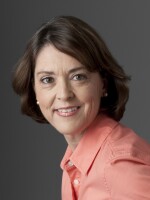Why did the Roman Catholic Church experience a sexual abuse crisis? There are no simple answers, according to a five-year study by the John Jay College of Criminal Justice that was released on Wednesday. But the reasons suggested in the report are unlikely to satisfy critics of the church.
Karen Terry, the principal investigator of the study, wants to debunk myths about the reasons behind the crisis. First, she says, "homosexuality is not a cause of this sexual abuse crisis."
After conducting surveys, seeing files and interviewing clerics, Terry says the researchers found that men who self-described as gay were no more likely than heterosexuals to abuse children. Rather, this was a crime of opportunity — troubled priests had more access to boys than girls, particularly in the 1960s and '70s, when the number of cases spiked.
Second, Terry says: "Celibacy itself is not a cause of the abuse crisis."
Priests have been celibate for more than 1,000 years, she says, so that cannot explain why they became more abusive beginning in the 1960s, nor why there were fewer reports beginning in the 1980s.
In fact, Terry says that nothing — not psychological exams, intelligence tests nor developmental history — predicted which priests would become abusers.
So what does explain the rise in abuse? A major reason, she says, was the 1960s.
"There's a sexual revolution, there's an increased amount of drug use, there's an increase in crime, there's an increase in things like premarital sex, in divorce," Terry says. "In a number of factors, there's change. And the men who are in the priesthood are affected by these social factors."
Opponents' Criticisms
A lot of us went through the '60s, and very few of us reacted to the pressures of that interesting decade by sexually abusing children.
Terence McKiernan calls that the Woodstock defense.
"A lot of us went through the '60s, and very few of us reacted to the pressures of that interesting decade by sexually abusing children," McKiernan says.
McKiernan heads the watchdog group BishopAccountability.org. He believes the report, which was partly paid for and overseen by the church, is flawed top to bottom. But what gets McKiernan really mad is what principal investigator Terry calls the report's central finding: that this is not a problem of pedophilia.
The researchers define pedophilia as abuse of anyone 10 or under, and by that definition, only 22 percent of the cases fall in that category. But McKiernan notes that the American Psychiatric Association puts the line at anyone under 14.
"And in fact," McKiernan says, "when you draw the line in the correct place, it turns out that 60 percent of the victims were aged 13 or younger. In other words, 60 percent of the victims were victims of pedophile abuse."
Is The Crisis Over?
However you define it, Terry says that once the church recognized the scope of the problem, it addressed it. Beginning in the early 1990s, she says, bishops set up systems to prevent abuse and to better screen problem clerics.
"The abuse crisis is over," she says. "But the response to the abuse continues, and there has to continue to be accountability and transparency from the bishops to address this problem."
She says some dioceses are better than others, but overall, they have made great progress — a claim that even some critics agree with.
But David Clohessy of the Survivors Network of Those Abused by Priests, a victims' group, wonders how it could be known that the crisis is over. It can take years for a victim to muster the courage to come forward. Moreover, he says, the bishops aren't always forthcoming about the number of abusive priests in their dioceses.
"Every single time there's an independent look at clergy sex crimes, whether it's a prosecutor or a grand jury or a governmental investigation, the percentage of accused child-molesting clerics jumps dramatically," Clohessy says.
He points to the Archdiocese of Philadelphia. Earlier this year, a grand jury report found that 37 priests who had been accused of abuse were still serving in active ministry. Soon after that, the archdiocese suspended 26 priests.
Copyright 2022 NPR. To see more, visit https://www.npr.org. 9(MDAzMjM2NDYzMDEyMzc1Njk5NjAxNzY3OQ001))







